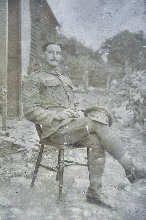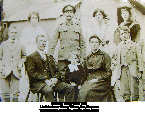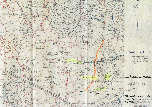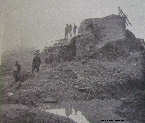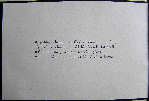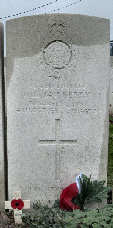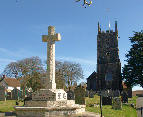
|
| HOME PAGE |
| MEMORIAL CROSS |
| HISTORY of the CROSS |
| ROLL of HONOUR |
| LINKS |
Private William Berry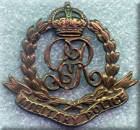 First enlisted in the Military Mounted Police P/1849
First enlisted in the Military Mounted Police P/1849Later transfered to 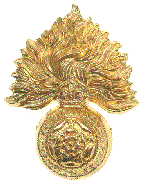 2nd Battalion Royal Fusiliers, 95420, 2nd Battalion Royal Fusiliers, 95420,86th Brigade, 29th Division Died 04.10.18 aged 26 William Berry, the eldest child of Ellen and Benjamin Berry, was born in 1892 into a large family of eight children living in Hollocombe. The 1901 census describes Benjamin as a thatcher born in Winkleigh, and his wife Ellen Cockram born in Wembworthy. Benjamin’s mother, Mary Ann, a 75 year old widow, was also living in their cottage together with the first four of the children, three of whom were at Hollocombe School. It must have been a crowded household. By 1911 three more children had been born, and Mary Ann was still surviving now aged 84. The eldest girl, Fanny, had moved out to live as a servant to Ada and Frank Farleigh, the Hollocombe grocer, and William, now aged 18, was a horseman on Higher Narracott farm, Ashreigney, farmed by William Tout. The youngest child Joseph, in the centre of the family photograph, was born about 1912. William enlisted at once in 1914. William, no doubt because of his riding skills, managed to get into the Military Mounted Police. Meanwhile Ben became a ploughman and did not enlist until 1916, apparently without telling his family, in the Royal Navy, and served on HMS Lupin, a Flower Class minesweeper and convoy escort ship of 1175 tons. Launched in 1916, the ship was armed with one 4-inch gun and twelve smaller guns, powered by two oil-fired boilers providing a top speed of 16.5 knots and a range of about 2000 miles at 15 knots, and she carried a complement of 98. His full story can be access by clicking HERE. In the Second World War Ben served again, this time in the Home Guard. Today, Ben’s granddaughter, wife of David Woolacott, has provided many photographs to add to the site. William Berry did well to enlist in the Military Mounted Police, a reasonably safe but at the same time an interesting and exciting job. Members of the Military Mounted Police were usually drawn from cavalry regiments, but as in the case of William Berry others were enlisted who showed particular skill in handling horses. During the Great War the Corps of Mounted Police contained no battalions or companies, so that it is virtually impossible to trace the records of any group of individuals by the means of war diaries or secondary sources. When the British Expeditionary Force was sent to France in 1914, each division had one Assistant Provost Marshal in the rank of Major, and each Corps a Provost Marshal, who held the rank of Colonel until 1915, and a Brigadier-General thenceforward. The original establishment of Mounted Police to various units was 6 persons to a Corps Headquarters, 25 to each cavalry division, and 25 to each infantry division. In order to give individuals the power to arrest, there was no rank of private in the corps, all new enlistments starting at the rank of Acting Lance-Corporal. With this authority came great status and a uniform which included the famous ‘red cap’ - the red band around the hat - and a red sash on ‘dress’ occasions. In 1914 the Corps of Military Mounted Police and the Corps of Military Foot Police had a total establishment of nearly 5000 men. During the retreat from Mons the MPs were busy dealing with soldiers who, through exhaustion or the general confusion of battle, had either lost or became detached from their units. By operating stragglers posts, the MPs were able to return soldiers to their units. These posts were also well placed to pick out deserters and those Absent Without Leave (AWOL). The First World War was the conflict where traffic control became an important function. This was identified particularly after the Battle of Loos, when there was a lot of confusion involving the mix-up of two British divisions who were moving forward to act as reserves for the second day and who as a result arrived exhausted and hungry to be thrown into the battle. As well as traffic control, the British Expedition to France provost units dealt with the maintenance of law and order (i.e. the detection of crime and the arrest of offenders), custody of prisoners of war until handed over to detention facilities, surveillance, control and the protection of civilians. Besides the BEF, The Corps of Military Mounted Police and the Corps of Military Foot Police served in every theatre of war, including Gallipoli, Italy, Palestine and Salonika. Their work was not all carried out behind the lines, and sometimes they came under heavy fire. Between 1914 and 1918 the two Corps of the Military Police suffered 375 casualties. Sixty-five received the Distinguished Conduct Medal and 260 received the Military Medal. William Berry’s personal records (in common with those of all our Winkleigh casualties) did not survive the London blitz in 1940, so we do not have any knowledge of the Division in which he originally served, or the date when he was transferred from the Mounted Military Police to the 2nd Battalion, the Royal Fusiliers, part of the 86th Brigade, 29th Division. By the start of 1918 there was an acute shortage of men to make up the terrible losses and more and more were being ‘combed out’ from those serving in much safer areas behind the front lines or at home, as well as returning as many as possible of those wounded men who could be sufficiently patched up to return to front-line units. The 29th Division had suffered particularly badly, and reinforcements were once again urgently needed. When the war began, the battalion was stationed in Calcutta, but returned to England in December 1914 to join the 86th Brigade, 29th Division. The Brigade consisted of the Royal Dublin Fusiliers, the Royal Munster Fusiliers, the Lancashire Fusiliers and the Royal Fusiliers. It first sailed from England in March 1915 and landed at Gallipoli 25 April 1915. The Brigade landed at Helles on X beach, opposed only by 12 Turks, and secured their foothold without any casualties. However, by the time they were evacuated back to Egypt in January 1916 from Suvla, it was less than 1400 strong, the size of one and a half Battalions, and with only 4 regular officers remaining. When the 29th Division as a whole left Egypt for the Helles landings, it had been 17,000 strong. During the campaign it had suffered 34,000 casualties, including more than 9000 killed or missing. In arithmetic terms the Division had already been wiped out twice, cobbled together time and time again with reinforcements. Following this experience the 29th soon moved to France, landing at Marseilles in March 1916, and took over the Beaumont Hamel sector on the Somme front. It was here that the division attacked on 1 July incurring a loss of 5,240 casualties on that day, and its memorial can now be seen at the entrance to the Newfoundland Memorial Park. The division took part in the Arras offensive in April 1917 and later that year in the Third Ypres (Passchendaele) offensive. In November 1917 the 29th was at Cambrai in the first mass tank attack and in the subsequent German counter-attack. The Cambrai fighting cost the division a further 4,400 casualties. In 1918 the division formed part of the spearhead attacking the Hindenburg Line, the campaign that finally brought the war to an end. It formed part of the Rhine Army of occupation and in March 1919 it was renamed the Southern Division. 1918 marked the final phase of the war, a return to open warfare after more than three years of virtual stalemate and frustration. It was revolution in Russia that changed the nature of the attritional deadlock in the west. With the surrender of Russia, fighting in the east stopped in late 1917, allowing the Germans to transfer many Divisions to the Western Front. They knew that time was running out, for the United States of America had now entered the war on the Allied side and it was only a matter of time before vast untapped reserves of manpower swung the balance in favour of the Allies. The Germans struck in the Kaiserschlacht offensive on 21 March 1918. The battle, codenamed ‘Michael’ continued until 5th April falling on the line south of La Bassee and across the old Somme battlefields. It was renewed on the 9th – 11th Aril with ‘Georgette’ on the line further north, between Ypres and Arras, with the aim of reaching the Channel ports and cutting off the entire British army. Held only after the bitterest of defensive fighting, the German effort was exhausted and the line froze once more. The Allies gained strength, barely understanding that the Germans had “shot their bolt”. From the launch of a surprise attack at Amiens on 8th August 1918, until the Germans called for an Armistice in November 1918, Haig’s British armies, by now battle-hardened and having learned the hardest way of all, equipped and supplied to the highest standard, pummelled the foe in a great and almost continuous advance. Between August 30th and September 3rd the British and Canadians cleared the whole of the Arras front and had reached the line of the Canal du Nord. On September 12th the Americans assaulted the St. Mihiel salient. There now followed ‘the grand assault’, beginning at dawn on September 26th, and delivered at 24 hour intervals. West of Verdun, the Americans and French first attacked through the Argonne forest, breaking through and capturing Montfaucon, an advance of three miles. On 27th, the British First and Third Armies broke over the Canal du Nord line and were into the Siegfried positions. Next, between 28th September and 2nd October Plumer’s Second Army attacked up the slopes of the ridge which encircled the Ypres Salient, in what has been termed the Fourth Battle of Ypres, from the Houthulst Forest in the north down to the Messines Ridge in the south. Finally, on 29th, Rawlinson’s Fourth Army and the French First Army smashed their way through the Seigfried Line. Success seemed to be incredible, and success set the scene for the final end to the war. It was on the evening of September 28th that Ludendorff urged Hindenburg to seek an immediate armistice and end the war, so that September 28th was also the day when Germany’s militarism and autocracy, the very factors that had led Germany into war in the first place, were ended. Ludendorff, Hindenburg and eventually even the Kaiser realized that not only the army’s ability and will to fight was draining away, but that President Wilson and the allies were not prepared to open negotiations with the German generals, as Ludendorff and Hindenburg were hoping, but only at the highest political levels. By October 1st-4th, a thirty mile stretch of the Hindenburg line had been breached open, and on October 2nd the Kaiser agreed that only the German Parliament had the right to make peace, and he gave up all control of the army and navy. Prince Max of Baden, the Kaiser’s second cousin, became Chancellor, in the final days of the war. By September 1918 the shortage of men in the British Army had led to a reduction from four battalions to three in all brigades. The 86th Brigade consisted of 2nd Battalion the Royal Fusiliers, 1st Battalion, the Lancashire Fusiliers, and 1st Battalion The Royal Dublin Fusiliers. They were supported by the 86th Machine Gun Company and the 86th Trench Mortar Battery. The 29th Division had spent July in Divisional Rest at Sabloniere, taking in new drafts and training for the next ordeal. It is possible, of course, but we have no way of knowing, that Private Berry was transferred during this period from the Military Police to the 2nd Battalion, Royal Fusiliers. It was an interesting time. On July 5th they were visited by one of the most well-known padres on the Western Front, ‘Woodbine Willie’, the Rev. Studdert Kenedy, who at the time was serving with the 42nd Division in the Third Army. This inspiring man who could somehow make the Gospel relevant to the ordinary man involved in the horror and the cynicism of the war was always popular with the men, if not always by senior officers, General Plumer for example. By this stage of the war Kennedy was touring many fronts as an inspirational preacher. The story of how, in 1915, as a newly arrived Chaplain to the Base Camp at Rouen, he would hand out Woodbine Cigarettes and New Testaments to drafts going up the line, is one of the enduring memories shared by many survivors of the Great War. On 22nd the Division moved to Noordpenne, a 20 mile march from 8.30 am to 3.30 pm. On 29th the Battalion concert party, ‘Ruffles’, presented an entertainment to officers and men. August saw the Battalion move into the Brigade Reserve at Le Kruele and on 10th they relieved the 1st Lancashire Fusiliers in the line. At 5.00 pm on August 19th a small attack took place to straighten the line, which achieved the capture of 111 prisoners and 10 machine guns, but at the serious cost of 2 officers and 18 other ranks killed, 2 officers and 53 other ranks wounded. The line was pushed forward again on 20th and 21st, but on 22nd the Battalion moved into a short ‘rest’ for two days. Back in the line on 30th they pushed forward again on 31st, opposed by snipers as the Battalion advanced. September followed a similar pattern of limited operations. On 2nd the Battalion moved from Strazeele to Outersteene, up in the line on 4th. On 5th, patrols pushed forward. 1 officer and 9 other ranks were killed, 29 other ranks wounded and with very heavy shelling 6 other ranks were missing. On 6th the Battalion was relieved by the Royal Welsh Fusiliers and bivouacked at Outersteene, before moving into Divisional Rest at Hazebrouck for 7 days, and then at Vlamertinghe (Dirty Bucket Camp!) from 19th – 23rd. Moving nearer the line, they then moved forward to Poperinghe, and finally to Ypres by September 27th. On 28th September the British Second Army attacked in the Ypres Salient, supported by no less that 500 aircraft. The task of the 29th Division was to advance up the line of the Menin Road, the central axis of the Salient, to capture Gheluvelt and Ghuluwe. The four battalions of the 86th Brigade were heavily involved, taking 4000 German prisoners on their first day alone. It was in this action that Private Berry was badly wounded, dying a few days later in a casualty clearing station before he had any chance of being sent down the line to a base hospital. We are fortunate that the War Diary of the 2nd Battalion Royal Fusiliers includes a complete narrative of their operations 28th September – 2nd October, allowing us to determine exactly when Private Berry was wounded. As a rule, only the names of officers were mentioned in war diaries, but in this case we can be reasonably certain that a particular entry actually refers to Private Berry himself. On the night of 27th/28th September the battalion had moved by train from Brandhoek where they had been in the last stages of their divisional rest, up to Ypres, and were billeted in the vicinity of the school. At 4.30 am on the morning of 28th they moved into their assembly positions for the attack. Zero hour was at 8.30 am, and aided by thick morning mist the battalion moved forward behind the artillery ‘creeping’ barrage, in support of the 1st Royal Dublin Fusiliers, two companies in the front wave, two in the rear. The first objective was captured by the 1st Lancashire Fusiliers at 7.08 am, and the 2nd Royals, still behind the 1st Dubliners, passed through their position. As they moved forward, opposition was encountered from various pillboxes on the Stirling Castle Ridge, and the advance was held up because the artillery barrage was falling too short to make headway. Although the morning mist was of great help at the start of the attack, the enforced halt brought confusion, and the battalion became somewhat mixed up with the Dubliners, but eventually both battalions moved on together to reach the Clapham Junction Ridge. The Germans were in no mood for a real fight and soon the machine gunners manning the pillboxes on the Ridge were surrendering freely as they were mopped up. X Company took 40 men and their guns, while those who were reluctant to emerge from a dug out were quickly killed. As the battalions pushed on, more prisoners emerged. The Dubliners then took cover and the battalion passed through them, taking more prisoners as they advanced towards the Polderhoek Ridge. Further pillboxes were rushed and more prisoners surrendered, including an officer, a Sgt.-Major and 48 gunners who were taking shelter rather than put up any resistance with their battery. By 9.45 am the Polderhoek Ridge had been rushed, and here the battalion halted to reorganize the line and to ensure that its left flank connected with the 9th Division Ahead of them the advance continued, and the 88th Brigade captured Gheluvelt by 10.30. The battalion then moved down the Menin Road, in echelon, and took up positions outside the village. At 5.00 pm new positions were taken in front of the Gheluvelt Ridge as the defensive flank to the Brigade. The day had been a relatively easy one. The Battalion had suffered very few casualties, and had captured about 300 prisoners, several machine guns, a complete battery of 5.9s and a few 77mm guns. Some of the machine guns captured had been mounted on top of the pill boxes, but the Germans were in no mood to get themselves killed. At 6.30 am the following day, 29th September, the advance continued, the battalion moving to the left rear of the Brigade in company with the Dubliners. Resistance was now much stiffer. The ridge was captured in spite of the heavy machine gun fire which caused a few casualties. Further trouble was caused by an enemy trench mortar in the wood east of the Gheluvelt cemetery, before being silenced by the 86th Trench Mortar Battery attached to the Battalion. No further advance was made that day, but fire was maintained on the enemy positions by our machine guns and Lewis guns. Enemy snipers were active and in the late afternoon the battalion came under persistent shelling. Overnight, the Battalion was relieved by the 1st Royal Dublin Fusiliers and moved back into the trenches just behind Gheluvelt. During this action over the two days the battalion suffered 2 officers wounded, 10 other ranks killed, 30 wounded and 7 missing (lost by shell fire). On the morning of 30th September the battalion moved forward to shelters and huts in the vicinity of the cross roads, staying there during the night 30th September/1st October. On 1st, the Battalion moved forward again and relieved the 1st Lancashire Fusiliers in the line, taking positions along the line of the road. During the night an unsuccessful attack was mounted by the 36th (Ulster) Division north of the road to capture the next village, Gheluwe. The task was given to the 86th Brigade on the morning of the 1st. Zero hour for the battalion was 7.00 am. X Company attempted to seize Burbury House and Harrod House but were repulsed by machine gun fire in spite of the support of their trench mortars and concentrated machine gun fire. Casualties were suffered. A German trench called the Gheluwe Switch was strongly held with machine guns and no further progress could be made. The 86th Brigade on the battalion’s right was unable to capture or hold Gheluwe, although in the confused situation patrols did penetrate the village. The whole area was then subjected by the enemy to heavy shelling, machine gun and mortar fire. During the night of 2nd October the battalion was relieved by the 2nd South Wales Borderers and marched back to shelters near the cross-roads. After two days rest in Ypres, they returned to the line on October 5th. During these four days 28th September to 2nd October the Battalion had suffered 4 officers wounded, 10 other ranks killed, 1 died of wounds, 45 wounded, 2 gassed, and 10 missing. These casualties include Private Berry. It is highly likely that the reference to ‘1 died of wounds’ could refer to Private Berry, if once out of the line and with time to write up his full report for the War Diary, news had reached the Adjutant from the Haringe Casualty Clearing Station (nicknamed ‘Bandigem’) that having been evacuated there with the others, William Berry had died of his wounds. Bandaghem, like Dozinghem and Mendinghem, were the popular names given by the troops to groups of casualty clearing stations posted to this area during the war. The cemetery site was originally chosen in July 1917 for the 62nd and 63rd CCS and burials from these, together with the 3rd Australian CCS and other hospitals, notably the 36th Casualty Clearing Station after 1st October 1918, continued until the end of that month. The cemetery contains 772 Commonwealth burials of the First World War. In 1918 the 36th Casualty Clearing Station was originally situated at Rousbrugge, as reported in the Second Army Medical Units Situation Report dated 9th October 1918. The War-Diary includes: ‘20th September 1918, Rousbrugge: Wire from DMS (Director of Medical Services) Second Army to open for sick and wounded from II Corps on 21st, to work alternately with the No3 Australian CCS at Bandaghem.’As a result of this order, patients were admitted to the 36th CCS at Rousbrugge on the following days, the large numbers of sick being accounted for by the ravages of ‘Spanish ‘flu’ which were seriously affecting the army in France and Belgium. The 28th September, the start date of the advance of 2nd Army from the Ypres salient, was clearly marked by the vast increase in casualties.
However, the War Diary of the 36th CCS reported that at Rousbrugge on 1st October William Berry had been wounded on any day between September 28th and October 2nd. He would have arrived at the CCS either just before the disastrous fire, and therefore would have gone to ‘Bandaghem’ as one of the stretcher cases who were moved there by train from Rousbrugge. (By 18th October the 36th CCS was fully installed at ‘Bandaghem’ and the 3rd Australian CCS had completed the move to Briclem.) This extra journey, would certainly have made his chances of survival less, as in the inevitable confusion he could not have received the constant attention he would have required. So great was the pressure now on the 36th CCS at ‘Bandaghem’ that no further cases were admitted after 30th September 1918. Private Berry had died just two days after the Battalion came out of the line. He lies in a marked grave in the Haringe Military Cemetery 18 km west of Ypres outside Poperinghe. His grave lies near the road, just on the left-hand side by the entrance, obviously one of the first to die from the casualties that began to arrive on and after the 1st October, to be buried in the new plot reserved for the incoming 36th CCS. William's death was only reported in the 'Western Times' on 2nd May 1918, over a month after his death, showing the backlog of army administration caused by the momentous events unfolding in France. 14 July 2011 |
|---|
| [Top] | Back to MEMORIAL CROSS |
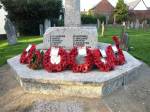
Click on an image for a larger picture  W Berry Memorial Card |
